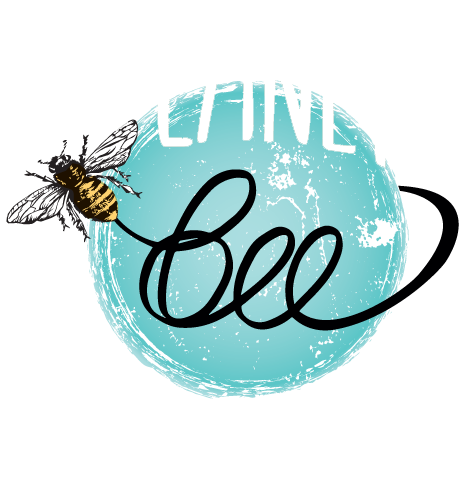
Native Bee House Seasonal Care Instructions

Learn How to Make a DIY Native Bee House & Join our Native Bee Community Science Project.
Link here!
Caring for a native bee nest home throughout the seasons involves specific steps to ensure the health and safety of the bees. Here’s a detailed guide for each season.
Spring
1. Preparation
Inspect the Nest Home: Check for any damage or signs of mold, moisture, or pests.
Clean the Nest: Remove any debris or old nesting material that might harbor pathogens or parasites.
2. Placement
Positioning: Place the nest home in a sunny spot, preferably facing south or southeast to capture morning sunlight.
Height: Mount it 3-6 feet above the ground, away from potential predators like ants and birds.
3. Provisioning
Provide Nesting Materials: Supply bees with materials like hollow reeds, paper tubes, or drilled wood blocks.
Ensure Food Sources: Plant a variety of native flowers that bloom throughout the season to provide consistent forage.
Summer
1. Monitoring
Regular Checks: Inspect the nest for signs of parasitism or other issues. Avoid disturbing the bees directly.
Maintain Cleanliness: Remove any visible parasites and keep the area around the nest tidy.
2. Water
Provide Water: Ensure there’s a shallow water source nearby for the bees, with stones or pebbles for them to land on.
Fall
1. Post-Activity Care
Monitor Activity: As bee activity declines, continue to monitor the nest for pests and other issues.
Remove Debris: Clear any fallen leaves or debris around the nest home to prevent moisture build-up.
2. Preparing for Winter
Harvesting Cocoons: If you’re using a managed bee system, carefully harvest cocoons once the bees are done nesting.
Clean the Nesting Materials: Sanitize or replace nesting materials to prevent disease. If using natural materials like reeds, replace them with new ones.
Winter
1. Protection
Move the Nest Home: If possible, relocate the nest home to a sheltered, dry location like a shed or garage to protect it from harsh weather.
Insulation: Provide insulation by wrapping the nest home in breathable fabric or placing it inside a larger container with ventilation.
2. Storage
Store Cocoons: If you’ve harvested cocoons, store them in a cool, dry place with good ventilation, such as a refrigerator. Monitor for mold or pests.
3. Preparing for Spring
Check Conditions: Regularly check the stored nest home or cocoons for any issues.
Plan Ahead: Ensure you have new nesting materials and a clean site ready for the next spring.
General Tips
Avoid Pesticides: Do not use pesticides near the bee nest home, as they can harm the bees.
Encourage Biodiversity: Plant a variety of native plants to support a healthy ecosystem for the bees.
Educate Neighbors: Inform neighbors about the importance of native bees and encourage them to avoid pesticide use.
Spring: Reintroducing Stored Cocoons
Reintroducing stored cocoons to the nest home is an essential step to ensure the successful emergence and activity of native bees in the spring. Here's how you can do it:
1. Timing
Ideal Time: Place the cocoons back in the nest home early in the spring when temperatures consistently reach 50-55°F (10-13°C) during the day. This usually coincides with the blooming of early spring flowers.
2. Preparation
Inspect Cocoons: Before placing them back, inspect the cocoons for any signs of mold, parasites, or damage. Remove any affected cocoons.
Clean Hands: Handle cocoons with clean, dry hands or gloves to prevent contamination.
3. Placement in the Nest Home
Choose a Suitable Location: Find a dry, sheltered location for the nest home, away from direct rain and strong winds.
Proper Orientation: Ensure the nest home is mounted securely, ideally facing south or southeast to receive morning sunlight.
4. Releasing the Cocoons
Provide Emergence Chambers: Create a small emergence chamber within the nest home. This can be a small, open container or a compartment where cocoons can be placed loosely but securely.
Even Distribution: Distribute the cocoons evenly in the emergence chamber to prevent overcrowding and allow easy access for emerging bees.
5. Monitoring
Regular Checks: Periodically check the emergence chamber to ensure that emerging bees can exit freely and that there are no blockages.
Remove Empty Cocoons: Once bees have emerged, remove empty cocoons to maintain cleanliness and prevent mold growth.
6. Supplemental Nesting Materials
Fresh Nesting Sites: Provide fresh nesting materials such as hollow reeds, paper tubes, or drilled wood blocks adjacent to or within the nest home.
Encourage Foraging: Ensure there are plenty of blooming flowers nearby to provide nectar and pollen for the emerging bees.
Additional Tips:
Climate Considerations: If you live in a region with unpredictable spring weather, consider placing the nest home in a location where you can monitor it closely and provide additional shelter if needed.
Predator Protection: Use predator guards or fine mesh screens to protect emerging bees from birds or other predators while allowing free movement.
Water Source: Place a shallow water source nearby, ensuring there are stones or pebbles for the bees to land on safely.
By carefully reintroducing stored cocoons and providing a supportive environment, you can help ensure the healthy emergence and establishment of native bees in your area.

